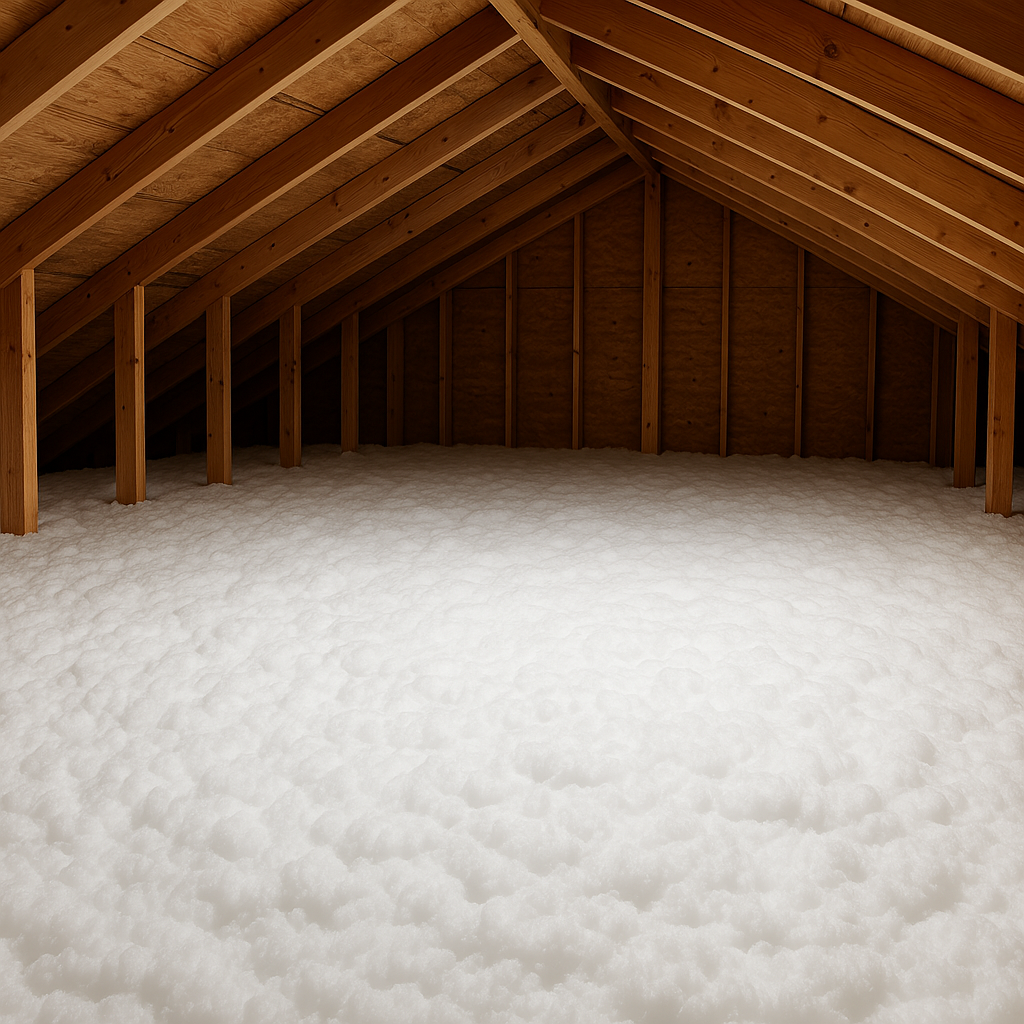Why So Many Homeowners Start With Spray Foam Insulation (But Don’t Always End There)

Let me ask you something: Have you ever found yourself Googling something like, “Why is my upstairs so hot in the summer when my AC is working just fine?“ Or maybe, “How do I make my home more energy efficient?”
If so, chances are you’ve stumbled across a bunch of articles or videos about spray foam insulation. It’s one of the first solutions homeowners come across when they start digging into how to make their homes more comfortable and energy efficient—especially in the attic.
And listen, it makes sense. Spray foam is modern, high-tech, and seems like an all-in-one solution. But here’s the thing: while spray foam can be useful in certain situations, most homeowners end up going a different route once they learn a bit more about what their home actually needs.
Let’s break this down.
Why Spray Foam Insulation Sounds Like the Perfect Fix
Spray foam gets a lot of attention because:
- It air-seals and insulates in one step.
- It sounds permanent and high-performance.
- It has that “cool new tech” appeal.
If you’re researching comfort issues in your home, especially your attic, it’s easy to assume spray foam is the best (or only) answer. But here’s what most people don’t realize upfront:
Spray Foam Isn’t a One-Size-Fits-All Solution
Spray foam can be a great option—especially in tricky spots like:
- Vaulted ceilings that don’t have enough space for traditional insulation
- Ductwork running through the attic that needs to be encapsulated
In these cases, spray foam’s ability to form around irregular shapes and create an air seal is a real asset. But for the majority of attics, spray foam ends up being:
- Expensive (often 2-3x the cost of other methods)
- Overkill when you’re not trying to encapsulate the entire attic
- Unnecessary for homes that already have vented attics with good airflow
And on top of that, it requires a much more complex install process that, if not done perfectly, can actually cause more harm than good.
So what do most homeowners end up doing instead?
The Case for Blown-In Fiberglass or Cellulose
Once people understand the actual condition of their attic and what problems are really going on, they usually pivot toward more cost-effective and targeted solutions—like blown-in fiberglass or cellulose.
Think of it this way:
If spray foam is like installing central air in your garage just to cool it down a little, blown-in insulation is like adding a ceiling fan and some shade—simple, effective, and way more affordable.
Benefits of Blown-In Fiberglass:
- Cost-effective
- Quick to install
- Non-combustible and doesn’t settle over time
- Great for vented attic systems
Benefits of Cellulose:
- Made from recycled materials
- Dense, excellent at blocking air movement
- Great sound dampening properties
- Fire-treated for safety
Both of these options, especially when paired with proper air sealing, can significantly improve your home’s comfort, lower your energy bills, and make your attic work with your HVAC system, not against it.
So, What Should You Do?
Start with a real inspection. Not a guess. Not a “we only sell spray foam so that’s what we recommend” kind of quote.
We’ll come out and give you a free attic inspection—no strings attached—and help you understand exactly what’s going on up there. From there, we’ll walk you through your options, explain what makes the most sense for your home and budget, and get you on a path to a more comfortable, efficient home.
Because you deserve to live in a home that actually feels good year-round—without wasting money or chasing the wrong solution.
Call us today to schedule your free attic inspection.
We’ll help you cut through the noise and figure out what your home really needs.
